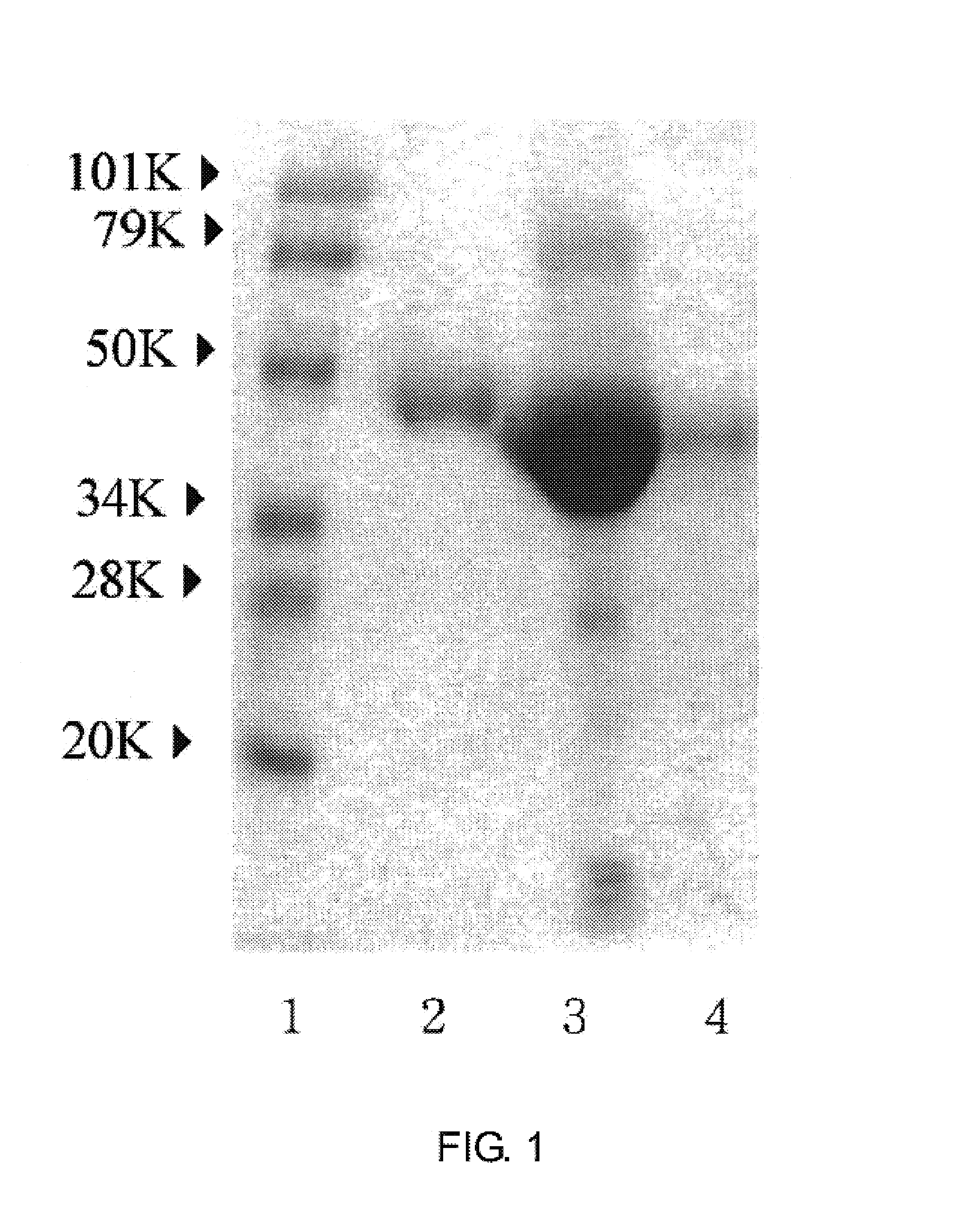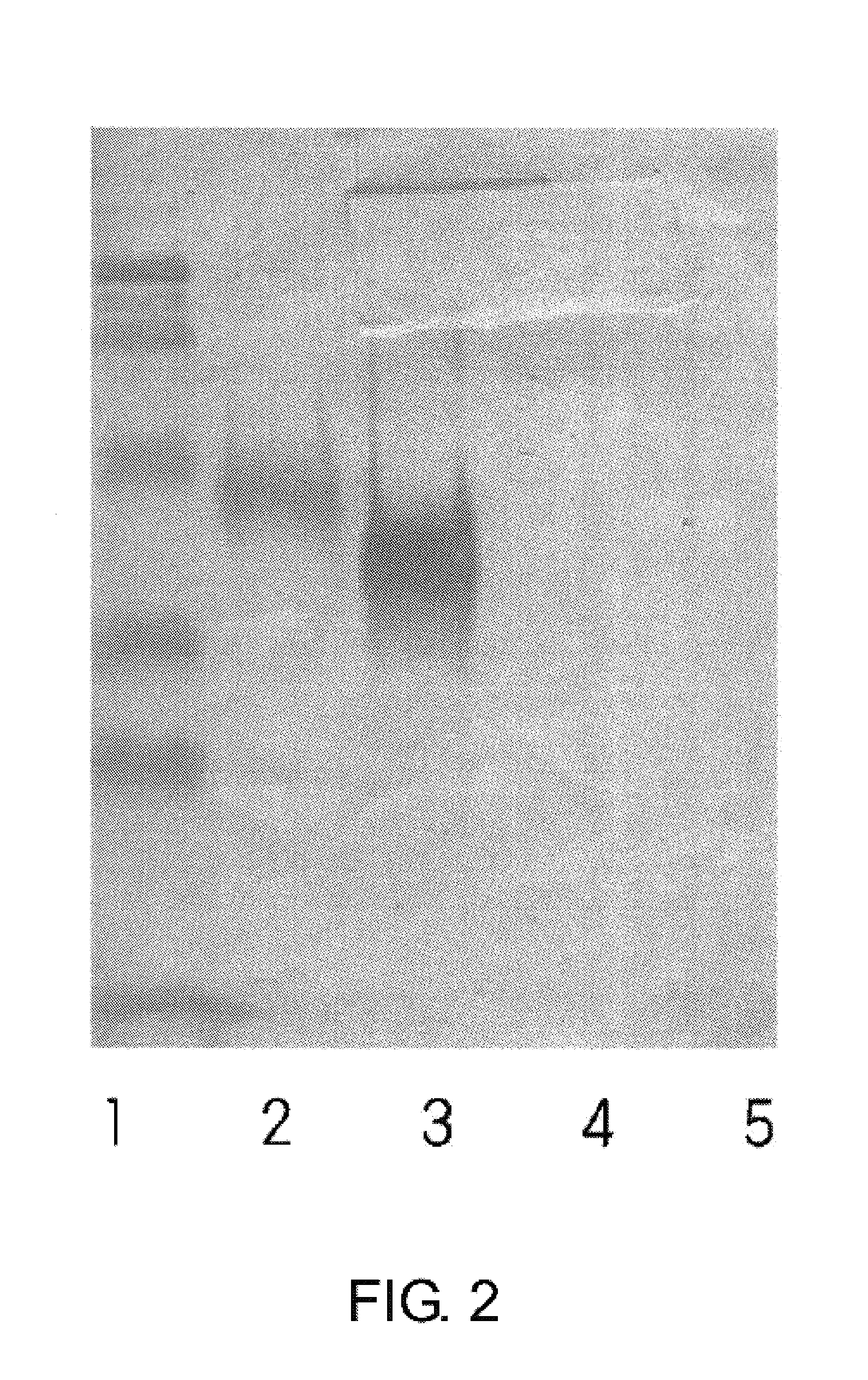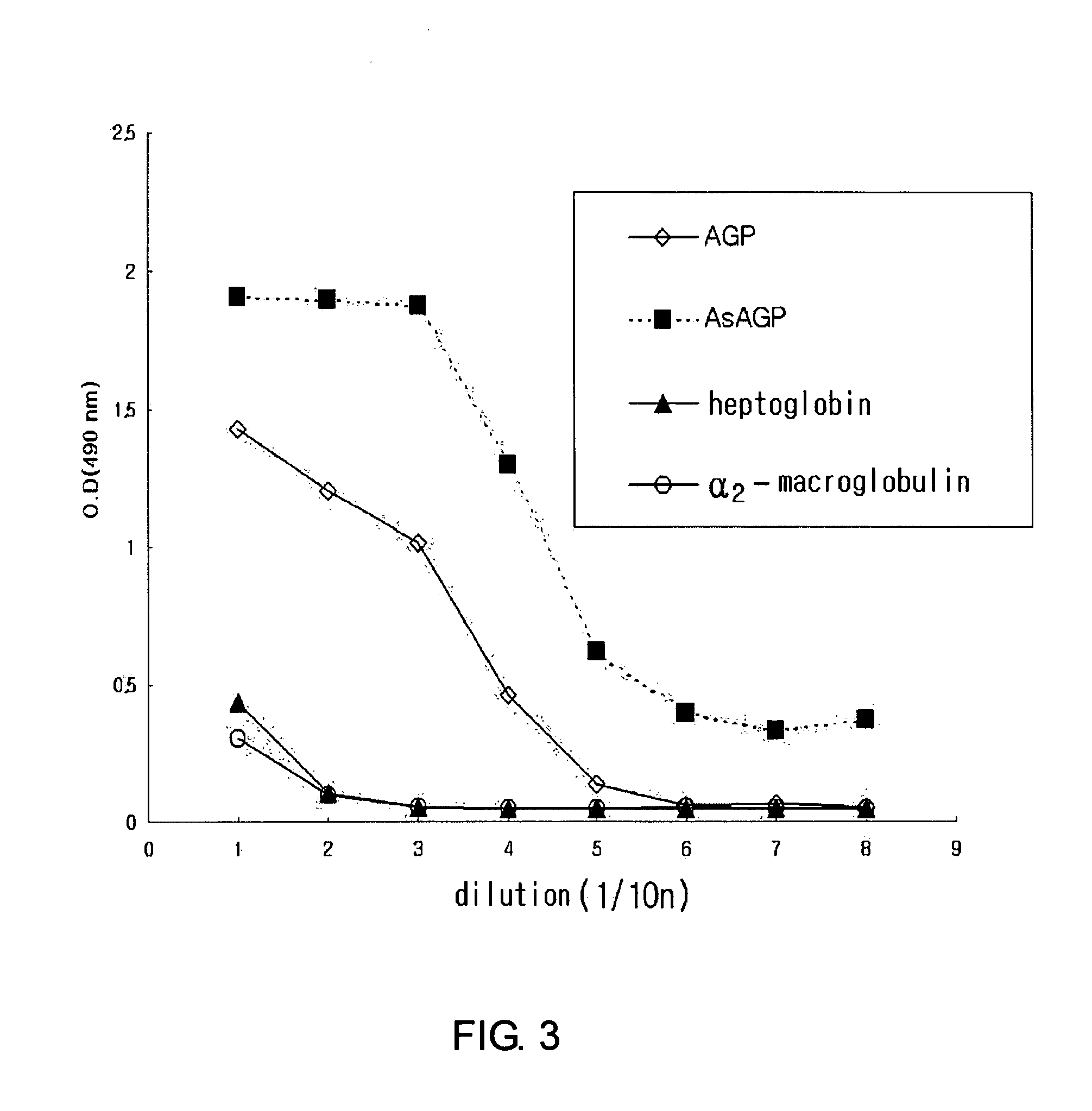Method for diagnosing liver diseases
a liver disease and rapid technology, applied in the field of liver disease rapid diagnosis, can solve the problems of difficult large-scale acquisition of receptors against asialo glycoproteins, difficult treatment of liver diseases, and danger of radioactive substances, so as to quickly and easily diagnose liver diseases
- Summary
- Abstract
- Description
- Claims
- Application Information
AI Technical Summary
Benefits of technology
Problems solved by technology
Method used
Image
Examples
example 1
Separation and Purification of Asialo α1-acid Glycoprotein (AsAGP)
[0037]α1-acid glycoprotein (AGP) was separated and purified from asialo glycoprotein contained in human blood plasma as follows.
[0038]2 NIH unit of thrombin was added to 200 ml of human blood plasma, stored at 37° C. for 2 hours and at 4° C. overnight and centrifuged to remove blood clot. The serum prepared above was dialyzed by using 0.05M of sodium acetate buffer (pH 4.3), loaded onto DEAE column previously equilibrated by using the same buffer, and then eluted through linear concentration gradient after 0.05 M of sodium acetate buffer (pH 4.3) and 0.1 M of sodium acetate buffer (pH 4.3) were mixed. Afterward, the optical density (OD) was measured at 280 nm and the data was illustrated in FIG. 1. The fractions including AGP and other proteins were collected, mixed with ammonium sulfate to 0.5 g / ml and centrifuged to precipitate proteins. The resulting supernatant was mixed again with ammonium sulfate to 0.18 g / ml to...
example 2
Preparation of Monoclonal Antibody Against Asialo α1-acid Glycoprotein
Immunization of Mice
[0040]In order to obtain an immunized mouse essential to prepare a hybridoma cell line producing a monoclonal antibody against asialo α1-acid glycoprotein, asialo α1-acid glycoprotein as an antigen was suspended well by using Titer-MAX, adjusted to 50 μg / 50 ml of concentration and then injected into peritoneal cavity of Balb / c mice aged 6˜8 weeks. After 2 weeks, the same amount of antigen mentioned in the first injection was mixed with Titer-MAX and injected repeatedly onto the same site. Through the same procedure, the antigen was injected again after 7 days and repeatedly injected after 3 weeks. Afterward, the small amount of blood was collected from a tail of mouse and examined to evaluate a titer.
(2) Cell Fusion
[0041]In order to perform cell fusion for preparing a hybridoma cell line, mice were immunized with asialo α1-acid glycoprotein antigen mentioned above and spleen cells and myeloma c...
example 3
Detection of Liver Disease by Diagnostic Kit for Immunochromatography
[0048]The diagnostic kit for immunochromatography of the present invention which can measure the concentration of asialo α1-acid glycoprotein in a test sample by the immune reaction between the monoclonal antibody As 16.89 specific for asialo α1-acid glycoprotein produced above and asialo α1-acid glycoprotein in blood was manufactured and applied in clinical fields as follows.
Preparation of Diagnostic Kit for Immunochromatography
[0049]The diagnostic kit for detecting asialo α1-acid glycoprotein in blood is composed of following components as described below.
monoclonal antibody (As16.89) specific for asialo α1-acid glycoprotein fixed onto solid carrier such as microplate
lectin (RCA)-horseradish peroxidase (HRP) against asialo α1-acid glycoprotein
sample dilution buffer (1% BSA / PBST)
enzyme substrate solution (OPD)
washing buffer (PBST)
standard solution of asialo α1-acid glycoprotein
stopping buffer
Measurement
[0050]a. Th...
PUM
| Property | Measurement | Unit |
|---|---|---|
| pH | aaaaa | aaaaa |
| pH | aaaaa | aaaaa |
| concentration | aaaaa | aaaaa |
Abstract
Description
Claims
Application Information
 Login to View More
Login to View More - R&D
- Intellectual Property
- Life Sciences
- Materials
- Tech Scout
- Unparalleled Data Quality
- Higher Quality Content
- 60% Fewer Hallucinations
Browse by: Latest US Patents, China's latest patents, Technical Efficacy Thesaurus, Application Domain, Technology Topic, Popular Technical Reports.
© 2025 PatSnap. All rights reserved.Legal|Privacy policy|Modern Slavery Act Transparency Statement|Sitemap|About US| Contact US: help@patsnap.com



